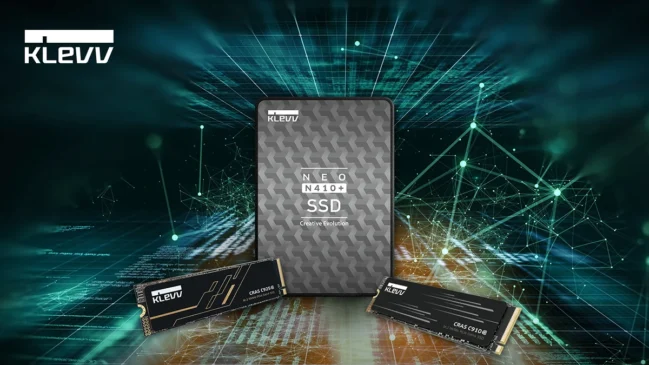
In the ever-evolving landscape of gaming, Naughty Dog has emerged as a beacon of innovation and storytelling mastery. From their earliest days crafting the whimsical adventures of Crash Bandicoot to the sweeping epics of the Uncharted series, the studio has continually pushed the boundaries of what games can achieve. Yet, it was with The Last of Us that they reached a pinnacle, a game that not only captivated audiences with its poignant narrative but also reshaped perceptions of gaming as an art form.
Released in 2013, The Last of Us was a revelation, blending gripping storytelling with immersive gameplay to create an experience that transcended the medium. It was a game that dared to explore the depths of human emotion, navigating themes of survival, loss, and redemption in a post-apocalyptic world. Its impact was profound, setting a new standard for narrative-driven gaming and inspiring a generation of developers to aspire to new heights.
AT A GLANCE
Developer: Naughty Dog
Release Date: January 19, 2024
Final Score: 10/10
Now, the long-awaited The Last of Us Part II Remastered arrives on PC, delivering enhanced visuals, refined performance, and exclusive features built for PC. Promising enhanced visuals, this remaster seeks to elevate an already acclaimed experience to new heights. But does it succeed in capturing the magic of the original while offering something new? In this review, we embark on a journey through the post-apocalyptic landscapes of The Last of Us Part II Remastered, exploring its narrative intricacies, gameplay innovations, and technical enhancements to uncover whether it truly stands as a masterpiece of the medium.
Story
The narrative of The Last of Us Part II Remastered unfolds as a rich tapestry of human experience against the backdrop of a world ravaged by a fungal pandemic. Picking up several years after the events of its predecessor, players are once again thrust into the role of Ellie, a young woman grappling with the weight of her past and the harsh realities of the present. This time, however, the story takes on a multifaceted approach, weaving together the lives of various characters as they navigate the complexities of a post-apocalyptic society.
One of the standout aspects of the narrative is its unwavering commitment to exploring the consequences of actions. As players progress through the game, they are confronted with morally ambiguous choices that ripple through the fabric of Ellie’s journey, shaping her character and the world around her. Themes of revenge, loss, and the fragility of humanity permeate every interaction, immersing players in an emotionally charged odyssey that defies traditional gaming conventions.

Central to the narrative’s potency is its ensemble cast of characters, each meticulously crafted and portrayed with nuance. Ellie’s evolution as a character is palpable, her journey punctuated by moments of introspection, growth, and heartache. Yet, it is the supporting cast that truly elevates the story, with each character adding layers of complexity and depth to the overarching narrative. Whether it’s the conflicted figure of Joel, the enigmatic presence of Abby, or the myriad of allies and adversaries encountered along the way, every interaction serves to enrich the emotional tapestry of the game.
What sets The Last of Us Part II Remastered apart is its ability to make players empathize with characters whose motivations may not always align with their own. This nuanced approach to character portrayal not only elevates the emotional impact of the narrative but also forces players to confront the grey areas of morality and question their own preconceptions. In doing so, the game transcends the boundaries of traditional storytelling, offering a genuine, visceral experience that resonates long after the credits roll.
Gameplay
The Last of Us Part II Remastered builds upon the solid foundation laid by its predecessor, introducing a host of improvements and additions that enhance the overall gaming experience. From refined gameplay mechanics to technical enhancements, Naughty Dog has spared no effort in ensuring that players are fully immersed in Ellie’s harrowing journey through the post-apocalyptic landscape.
Combat in The Last of Us Part II Remastered is a finely tuned dance of tension and strategy. Building upon the fluidity of movement and responsiveness of controls established in the original game, players are empowered to navigate encounters with a sense of agency and adaptability. Ellie’s agility allows for dynamic engagement, as players seamlessly transition between stealth and action to outmaneuver and outwit their adversaries.
The introduction of new mechanics, such as prone crawling and enhanced environmental interaction not only expand the player’s toolkit but also provide creative avenues for navigating the hostile environments of the game world. Whether it’s utilizing stealth to evade enemies or utilizing environmental objects to gain the upper hand in combat, players are encouraged to experiment and adapt their playstyle to suit their preferences.
Resource scarcity remains a constant theme, underscoring the brutal reality of survival in a post-apocalyptic world. The crafting system returns, allowing players to scavenge for materials and craft makeshift weapons, ammunition, and health kits. However, the decision-making process of resource allocation becomes even more crucial in the remaster, as players must carefully consider every bullet and item in their inventory, knowing that each encounter could have dire consequences.

Ellie’s interactions with other characters feel more dynamic and realistic, creating a sense of camaraderie that adds emotional weight to the journey. The AI adapts to the player’s actions, contributing to the overall narrative immersion and ensuring that every encounter feels unique and unpredictable.
The remaster introduces technical enhancements that elevate the visual and auditory experience to new heights. With the introduction of the Fidelity Mode and Performance Mode, players can choose between stunning 4K visuals at 30 frames-per-second or dynamic 1440p resolution at 60 fps, ensuring that the game looks and feels better than ever before.
The integration of the DualSense controller is another standout feature of the remaster, offering players a sensory revelation with its granular haptic feedback and adaptive triggers. Every sensation, from the recoil of a shotgun blast to the tension of pulling back an arrow in a bow, is meticulously crafted to enhance immersion and elevate the gameplay experience.

Beyond technical enhancements, the remaster also introduces exclusive content that provides additional depth and insight into the game’s world and characters. Lost Levels offers players a glimpse behind the curtain with three previously unreleased stages, each offering unique gameplay challenges and insights into the development journey of The Last of Us Part II. Additionally, lead designers provide commentary, offering valuable insights and context that enrich the player’s understanding of the game’s narrative and design.
Visuals, Audio, and Technical Performance
In The Last of Us Part II Remastered, Naughty Dog has meticulously crafted a sensory masterpiece that immerses players in a world brimming with visual splendor, haunting melodies, and powerful performances. From the stunning visuals to the evocative soundtrack and stellar voice acting, every aspect of the game’s presentation contributes to its immersive narrative experience.
The remaster’s crowning jewel is undoubtedly its visual enhancements, which breathe new life into the desolate landscapes of The Last of Us Part II. Meticulously designed environments, weathered structures, and overgrown foliage pulsate with life, creating a vivid and immersive world that draws players deeper into its gritty beauty. Whether it’s the crumbling ruins of a once-thriving city or the lush overgrowth reclaiming abandoned streets, every detail is rendered with breathtaking realism, making exploration a feast for the senses.
The remaster also offers improved shadow quality and texture resolution to extended draw distances and richer environmental detail; every aspect of the game’s visuals has been meticulously refined to maximize immersion and realism. The result is a stunningly lifelike world that feels alive and vibrant, drawing players deeper into the game’s narrative and atmosphere.
Gustavo Santaolalla’s haunting score, a cornerstone of the original game, returns with renewed vigor in the remaster. The auditory landscape is a captivating dance of melancholy and tension, punctuating every narrative beat with emotional resonance. From the mournful strains of a lone guitar to the pulsating rhythms of intense combat encounters, the soundtrack enhances the game’s atmosphere and immerses players in its world like never before.
The soundtrack of The Last of Us Part II Remastered is a testament to the power of music in storytelling. Composed by Gustavo Santaolalla, the score blends acoustic melodies with atmospheric textures to create a haunting and evocative soundscape that perfectly complements the game’s narrative. Each track is carefully crafted to reflect the emotional depth and intensity of the story, enhancing key moments and drawing players further into the world of Ellie and Joel.
The voice acting in The Last of Us Part II Remastered is nothing short of exceptional, with each performance imbuing the characters with depth, nuance, and authenticity. Ashley Johnson delivers a tour de force performance as Ellie, capturing the character’s vulnerability, resilience, and emotional complexity with remarkable skill. Troy Baker’s portrayal of Joel is equally compelling, conveying a sense of gravitas and world-weariness that resonates with players on a profound level. The supporting cast also delivers standout performances, with each actor bringing their characters to life with depth and authenticity, further enhancing the game’s immersive narrative experience.

The Last of Us Part II Remastered on PC introduces a host of quality‐of‐life enhancements uniquely tailored for desktop gaming. PC players benefit from an extensive graphics menu that lets you adjust texture quality, LOD distance, volumetric lighting, shadow resolution, ambient occlusion, and reflections to perfectly balance performance and visuals on diverse hardware. The port supports advanced upscaling technologies such as Nvidia DLSS 3 and AMD FSR 3.1/4.0, ensuring smooth frame generation and high-resolution output even on ultrawide monitors, including 21:9, 32:9, and triple-display 48:9 configurations. Additionally, it offers an unlocked framerate option paired with customizable VSync and framerate caps, making performance tuning more intuitive. Enhanced input options feature full keyboard and mouse remapping along with an adaptive control mode, allowing seamless combination with gamepad inputs. These PC-specific upgrades ensure that The Last of Us Part II Remastered delivers an optimized, visually stunning, and immersive experience on modern desktop systems.
Naughty Dog has spared no effort in optimizing the remaster for maximum stability and performance. The game runs smoothly and consistently, with no noticeable frame drops or stuttering even during the most intense combat encounters. This level of optimization ensures that players can enjoy a seamless and immersive experience from beginning to end, without any technical hiccups or interruptions.
Final Score
Summary
The Last of Us Part II Remastered on PC doesnu2019t merely polish a masterpieceu2014it redefines it with cutting-edge graphical enhancements and PC-specific optimizations. Boasting native 4K, ultrawide display support, and customizable controls, every detail is reimagined for PC, transforming Ellie's brutal world into an immersive, riveting experience unlike any other.





